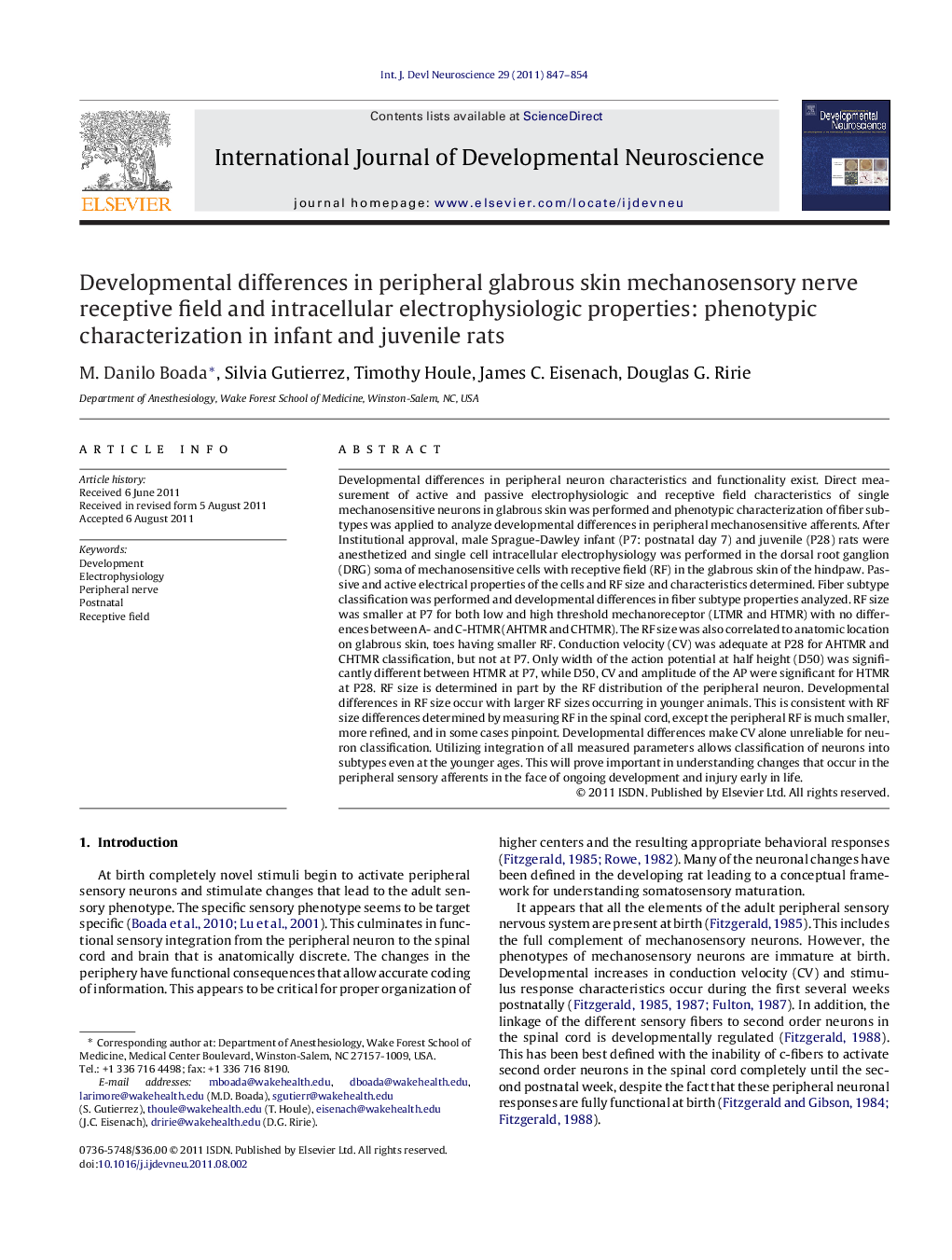| Article ID | Journal | Published Year | Pages | File Type |
|---|---|---|---|---|
| 2786316 | International Journal of Developmental Neuroscience | 2011 | 8 Pages |
Developmental differences in peripheral neuron characteristics and functionality exist. Direct measurement of active and passive electrophysiologic and receptive field characteristics of single mechanosensitive neurons in glabrous skin was performed and phenotypic characterization of fiber subtypes was applied to analyze developmental differences in peripheral mechanosensitive afferents. After Institutional approval, male Sprague-Dawley infant (P7: postnatal day 7) and juvenile (P28) rats were anesthetized and single cell intracellular electrophysiology was performed in the dorsal root ganglion (DRG) soma of mechanosensitive cells with receptive field (RF) in the glabrous skin of the hindpaw. Passive and active electrical properties of the cells and RF size and characteristics determined. Fiber subtype classification was performed and developmental differences in fiber subtype properties analyzed. RF size was smaller at P7 for both low and high threshold mechanoreceptor (LTMR and HTMR) with no differences between A- and C-HTMR (AHTMR and CHTMR). The RF size was also correlated to anatomic location on glabrous skin, toes having smaller RF. Conduction velocity (CV) was adequate at P28 for AHTMR and CHTMR classification, but not at P7. Only width of the action potential at half height (D50) was significantly different between HTMR at P7, while D50, CV and amplitude of the AP were significant for HTMR at P28. RF size is determined in part by the RF distribution of the peripheral neuron. Developmental differences in RF size occur with larger RF sizes occurring in younger animals. This is consistent with RF size differences determined by measuring RF in the spinal cord, except the peripheral RF is much smaller, more refined, and in some cases pinpoint. Developmental differences make CV alone unreliable for neuron classification. Utilizing integration of all measured parameters allows classification of neurons into subtypes even at the younger ages. This will prove important in understanding changes that occur in the peripheral sensory afferents in the face of ongoing development and injury early in life.
► Peripheral receptive field size is larger in the young and is a property of low and high threshold neurons. ► Conduction velocity is inadequate for classification of mechanosensitive neurons early in development. ► Combining partially conserved neuron properties makes classification of peripheral afferent fibers possible in early development. ► This knowledge will enable understanding of noxious input at critical periods early in postnatal life.
